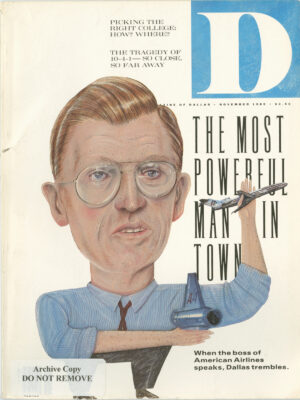WELL-VESTED MALES TEND TO FALL into two categories. The first: men in suits who feel slightly naked without one and who consider it a requisite look for taking care of business. They tend to shop at manly haberdasheries and stores of that ilk, just like Dad did. The other: men with attitude, who cultivate the vest as a point-of-personality accessory, a visual communication tool that, far from matching a man’s coat and trousers- indeed occasionally worn sans jacket-pushes him far from the pack. These men shop in idiosyncratic spots and with great care. This is much as it has always been.
The waistcoat-deemed preferable to the more vulgar term “vest”-made its debut in Europe around 1670. It was practical then; worn long for warmth and modesty’s sake, covering a man’s legs and etceteras that were sheathed in tights. By the late 1700s, masculine clothing and society had gone through an era of frippery and froufrou, a veritable heyday for waistcoats and the like, and then retreated to a more subdued style. The silks and velvets that had been in vogue were shoved aside, and simple cloth was the ticket for a real man’s wardrobe. But the waistcoat continued as a reminder of splendid times past, elegant and embroidered in florals and embellished in silks and brocades. Certifiable dandies wore more than one.
The 1900s brought us fancy dress vests sewn in plush velvet with braided trim, occasionally embroidered and even double-breasted. Cowboys were seen in rough-hewn cloth and suede ones (for the rough stuff) but put on fringed buckskin vests to make themselves pretty.
The 20th century gave us a more sophisticated European attitude toward dressing, with waistcoats becoming a hard-working part of a gentleman’s business suit. They were absolutely mandatory for formalwear and were cultivated by the masses as a way to edge closer to the upper crust.
Pastel linen vests were the rage in resort clothing by the mid-Twenties (for those who could still resort), and in the Thirties tattersall and traditional plaids were an important part of the “country gentleman’s” daytime weekend look, though both were considered gauche in the city.
Waistcoats disappeared from view during the Forties and Fifties, surfacing again in the Sixties when they wafted toward art form, finding a new identity as part of hippie street gear.
The waistcoat was firmly a vest in the Seventies, while the Reagan years just said no to frivolous waistcoats and left gentlemen no choice but to match that suit and sit quietly. The brave pulled one on only under cover of darkness when formal occasions demanded drama: proof that during periods of economic flux and sociopolitical stagnation, the gentleman’s waistcoat has peacefully coexisted with sterner suits and has been the individualist’s parade ground for decorative style. Which brings us to 1989.
This fall waistcoats, the elegant, non-matching, expressive ones, have once again surfaced as a fashionable item. Which is not to say they’ve ever gone away, not really, but merely that it’s time to take the dare again. That even though there’s a Republican in the White House, the times they are a-changing. Several menswear designers showed vests as part of their elegant, traditional day looks for business this fall, but the most elegant were perhaps the exquisite evening ones shown by Ronaldus Shamask in his collection of American sportswear for men and for women. Striped mylar-silk ones and opulent brocades were shown topping off crisp white wing-collared tux shirts beneath dashing double-breasted black jackets. As trousers, Shamask’s male and female models wore their own ripped and torn blue denim jeans. These were modernist waistcoats that could work dressed down for daytime or up for after dark. The standing ovation that followed this last group off the runway was a salute to an intelligent solution that points the way to the Nineties.
On a local level, Dallas males may want to eschew the ripped and torn jeans ensemble and opt instead for something less trendy, more attitudinal. We suggest denims sans trauma worn with a quirky vintage vest over a tux shirt treated casually. Add your weathered leather bomber jacket and the effect is definitely retro hip. For a night out, try an interesting brocade vest paired with your favorite dark, double-breasted suit.
Where to look? You should at least ogle theShamask collection, on view and for sale atthe men’s store in Stanley Korshak. Othergood places to look: Sebastian’s Closet forwaistcoats by Axis, Neiman Marcus and ThePolo Shop for Ralph Lauren devotees. Wortha browse for cheap tricks: the vintage racksat Ahab Bowen, Boomerang, Hollywood, orMartha’s Magic Closet.
Get our weekly recap
Brings new meaning to the phrase Sunday Funday. No spam, ever.
Related Articles

Arts & Entertainment
Finding The Church: New Documentary Dives Into the Longstanding Lizard Lounge Goth Night
The Church is more than a weekly event, it is a gathering place that attracts attendees from across the globe. A new documentary, premiering this week at DIFF, makes its case.
By Danny Gallagher

Football
The Cowboys Picked a Good Time to Get Back to Shrewd Moves
Day 1 of the NFL Draft contained three decisions that push Dallas forward for the first time all offseason.


